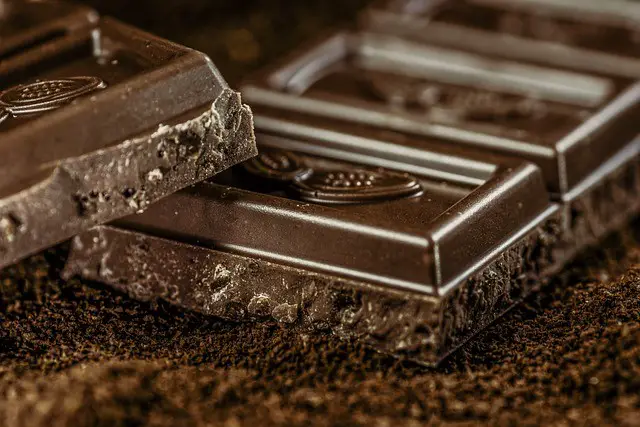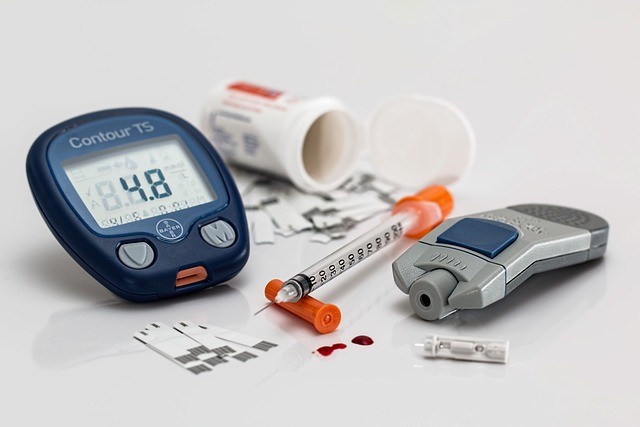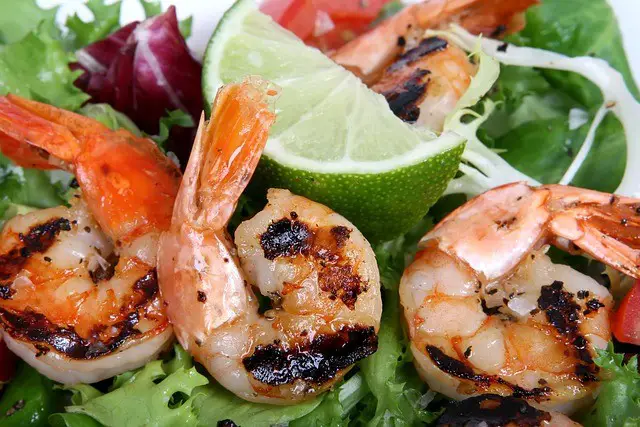The thing I love most about the ketogenic diet is that I can still feed the carnivore in me. Meat lovers get it! As long as you are choosing fresh meat, poultry, and sea foods rich in healthy fats over processed varieties, you are good to go.
One thing most people are worried about is the fat content in meat and sea foods. You’re probably asking yourself, aren’t meats and seafood high in cholesterol levels? Tuna, a saltwater fish, is the world’s most consumed fish.
Since we are all trying to make dietary choices that are heart healthy, while still consuming the foods we love, we are asking ourselves, is tuna high in cholesterol? Stick around to learn about cholesterol, what it is, the dietary guidelines for consumption, its types, and how they affect heart health. We will also discuss the nutrition facts of tuna fish, and if it has high cholesterol levels.
Cholesterol 101

Cholesterol is a waxy, fatty substance produced in your liver and found in foods we eat that are high in fat and animal products. Your body produces 75% of cholesterol and you get 25% from your diet. For many years, there have been so many controversies surrounding eating high-cholesterol foods and their effect on heart health. When we talk about cholesterol, it is not mainly about how much you are eating, but what type you are consuming.
Completely eradicating cholesterol from your diet can be detrimental to your health. Cholesterol is needed to manufacture cells, make sex hormones, process vitamin D, and for bile production to help with fat digestion. However, these benefits can be achieved by eating good fats and avoiding bad cholesterol.
Types of Cholesterol
Low-Density Lipoprotein
This is the bad cholesterol you should be avoiding. High LDL cholesterol levels increase the deposition of fat on arterial walls, narrowing blood vessels and increasing blood pressure in the arteries. When these deposits (plaques) break off from the walls of your arteries, they can cause blockage in major blood vessels leading to heart attack and stroke. Bad cholesterol is a risk factor for heart disease.
There are two types of LDL cholesterol:
- Large Buoyant LDL: This type is large and fluffy as it goes through the arteries. This is the less dangerous type of LDL cholesterol.
- Small dense LDL (sd LDL-C): This is the dangerous type of LDL. The small dense LDL damage arterial walls and is a marker for predicting heart disease. It can also be used as an indicator for detecting inflammation in the artery.
Small dense LDL come from a high carb diet. They are also more dangerous than the former because they are more in number increasing chances of deposition on the walls of the arteries.
High-Density Lipoprotein
Also known as good cholesterol. HDL cholesterol’s major role is to round up bad cholesterol in the body and take it back to the liver where it is broken down for reprocessing or excretion. It also has anti-oxidative and anti-inflammatory properties that help reduce cell damage from oxidative stress.
Because they are the good kind of cholesterol, when you raise HDL, you lower the risks of heart disease.
So, take a deep breath and relax, you don’t have to fret when you hear cholesterol. Not all cholesterol is bad.
Triglycerides
Triglycerides are types of fat from your diet made in your body. Triglyceride levels are affected by one’s sex and age. High triglyceride levels increase total blood cholesterol levels and LDL cholesterol levels and lower HDL cholesterol levels.
The American Heart Association recommends that adults above 20 years should have their cholesterol levels checked every four to six years. Your lipid profile is the test that will tell you how much HDL cholesterol, LDL cholesterol, and total cholesterol you have in your blood. I would recommend taking an advanced lipid test that will measure the two types of LDL.
For you to be considered to have healthy cholesterol levels, your lipid profile has to read as follows:
- Total cholesterol levels of less than 200 mg/dL
- LDL cholesterol levels below 100 mg/dL
- HDL cholesterol levels above 60 mg/dL
Effects of Diet on Cholesterol Levels
Your diet can affect your cholesterol levels. High-cholesterol foods can increase your cholesterol levels. Foods rich in trans fat like baked products and junk foods increase LDL cholesterol and lowers HDL cholesterol.
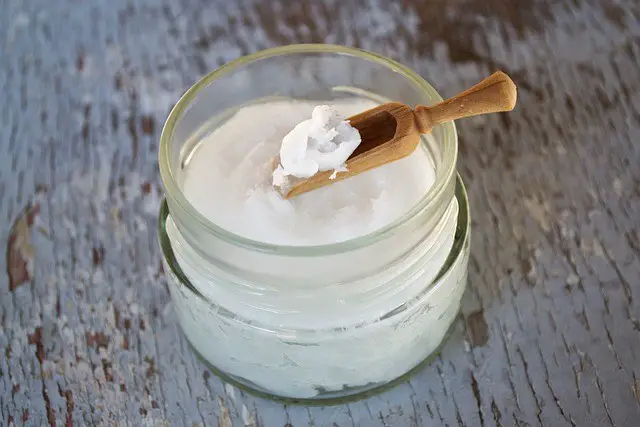
Saturated fat has been painted as the bad guy for a while, but recent studies state otherwise. Excess consumption of saturated fat increases the risk of heart disease. But consumption of saturated fats in moderation has no relation to the risk of heart disease. Foods and oils containing saturated fat like coconut oil can have health benefits for the body. Excessive consumption of saturated and trans fats can lead to high cholesterol and increases the risk of atherosclerosis, heart attack, and stroke.
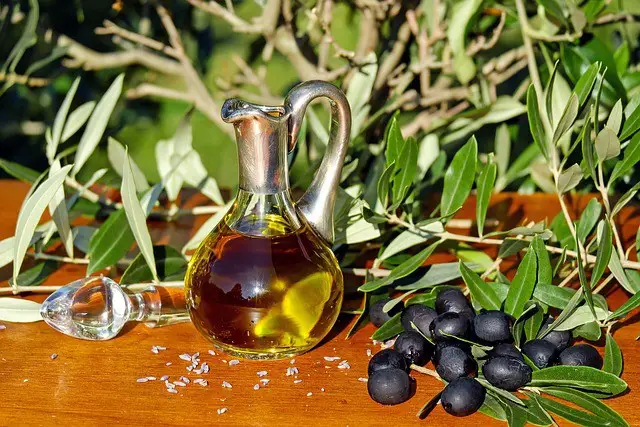
Monounsaturated and polyunsaturated fatty acids (MUFAs and PUFAs) are recommended because they are healthy fats. These fats boost heart health and improve mental function. Foods rich in MUFAs and PUFAs include nuts and seeds, avocados, olive oil, and fish. Omega fatty acids (omega 3 fatty acids and omega 6 fatty acids) are essential dietary fats. The main sources of omega are fish and fish oils whose function is to promote cell function, provide cell structure, and help in lowering cholesterol. Omega 3s are found in high concentrations in the brain and eyes.
Medium-chain triglycerides (MCTs) are also another type of fat in your diet that can help lower cholesterol in the body. MCTs can be broken down during ketosis to produce fuel for neurons. Foods rich in MCTs include palm kernel oil, coconut oil, cheeses, and high-fat dairy products.
The American Heart Association dietary guidelines recommend getting 30% of your total calories from fat, less than 10% from saturated fats, less than 1% from trans fat, 10% from MUFAs, 15% to 20% from PUFAs, and consuming less than 200 mg of cholesterol from your diet, preferably from fatty fish.
Can You Eat Fish When You’re Watching You’re Cholesterol?
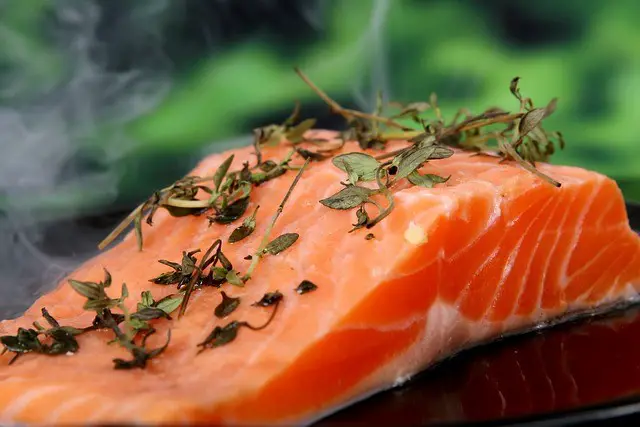
Yes, you can eat fish when watching your cholesterol. Fish, nuts, and seeds are good sources of omega-3 fatty acids that can help in lowering cholesterol and increasing levels of HDL cholesterol, reducing the risk of cardiovascular disease.
Your body cannot make omega-3 fatty acids so you must get them from your diet. The roles of omega-3 fatty acids include:
- Improves mood and lowers depression.
- Promotes gut health by reducing inflammation and reverting microbiota composition.
- Improves heart health by lowering bad cholesterol, and raising good cholesterol, which helps to maintain healthy cholesterol levels.
- Help in preventing and treating sarcopenia due to its anti-inflammatory properties.
- Improves neurodegenerative diseases by increasing the function of the central nervous system.
Salmon, tuna, and trout are as good sources of omega as walnuts and flaxseeds. Fish like salmon are low in saturated fat and trans fats, with most of them containing no trans fats. Doesn’t this make them heart-healthy choices you can enjoy?
Is Tuna High in Cholesterol?
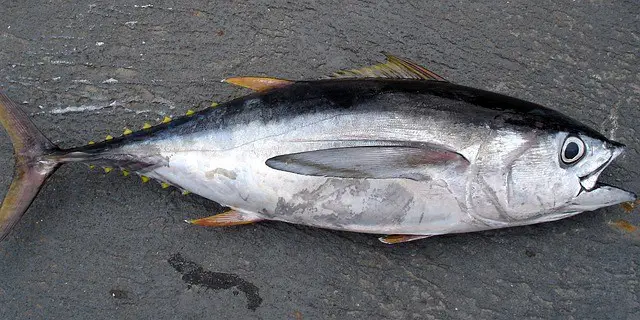
What are the nutritional facts of fresh tuna? In 28 g of tuna, you will get:
- Energy: 31 kcals
- Fat: 0.1 g
- Cholesterol: 11 mg
- Total Carbs: 0 g
- Protein: 6.5 g
Compared to other fish like salmon, tuna contains lower cholesterol content. In 3 ounces of tuna, you will get only 13 mg of cholesterol. The cholesterol in tuna is omega 3 fatty acids, the good kind. So, tuna is rich in cholesterol, however, the good kind that lowers high cholesterol.
Is Canned Tuna Good for Triglycerides?

What you are allowed to eat on keto is fresh foods, rather than processed foods. If you’re wondering, is tuna high in cholesterol? I am not surprised you’d ask about canned tuna. Canned tuna contains 5 to 10 mg of cholesterol per ounce and contains more saturated fats than fresh tuna.
The kind of tuna packed in oil tends to have more calories than that in water. The amount of total fat and cholesterol is also dependent on whether it is in water or oil. Canned tuna just like fresh tuna contains cholesterol.
Docosahexaenoic acid (DHA) is the type of omega-3 fatty acid found in canned tuna in water. DHA promotes blood circulation and improves endothelial function. It can also assist in lowering blood pressure.
It can help increase the number of good cholesterol in the blood. However, DHA has been found to increase LDL cholesterol, although, the fluffy LDL particles are not linked to the risk of heart disease. The effects of canned tuna on HDL can outweigh those on LDL, making it a good source of protein and omega 3s.
Note that canned tuna can be high in calories, saturated fat, and high levels of sodium, which can elevate triglyceride levels. High triglycerides and too many calories promote weight gain. Weight gain further leads to obesity, a risk factor for heart disease.
Choose light tuna because it contains less mercury, and pick canned tuna in water over that in oil because it is less calorie dense and has lower amounts of saturated fat, reducing the risk of high cholesterol.
Are All Fish Low in Cholesterol?
Not all fish are the same, some contain lower amounts of cholesterol than others. Shellfish have high amounts of cholesterol than finfish. The cholesterol content in 3 ounce serving of common shellfish is as follows:
- Shrimp: 161 mg
- Lobster: 124 mg
- Crayfish: 232 mg
- Prawns: 189 mg
- Scallops: 53 mg
- Clams: 57 mg
Although the cholesterol levels are high, they have lower amounts of saturated fats and contain sterols that will not negatively affect your heart. Your doctor may ask you to avoid eating shellfish if you have high cholesterol. Research has shown that eating prawns can increase LDL levels and HDL levels, but the good outweighs the bad.
You can enjoy shellfish in moderation, so as not to pump your body with too much cholesterol and to stay within the recommended cholesterol limit.
How Can You Lower Your Cholesterol?
You can make the following lifestyle changes to help you lower cholesterol. Lifestyle changes plus regular visits to your doctor to take blood tests to help monitor your cholesterol.
Physical activity
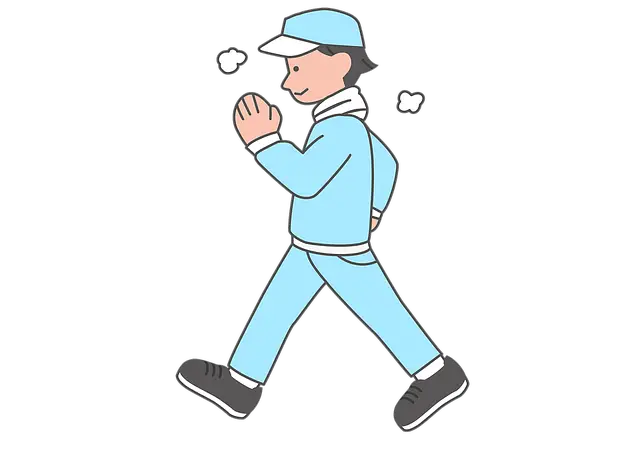
Aerobic activity can help you lower LDL cholesterol related to the clogging of arteries. Exercises like walking and running can improve lipid profile by increasing skeletal muscle’s ability to use lipids as a fuel for energy.
Avoid Drinking and Smoking
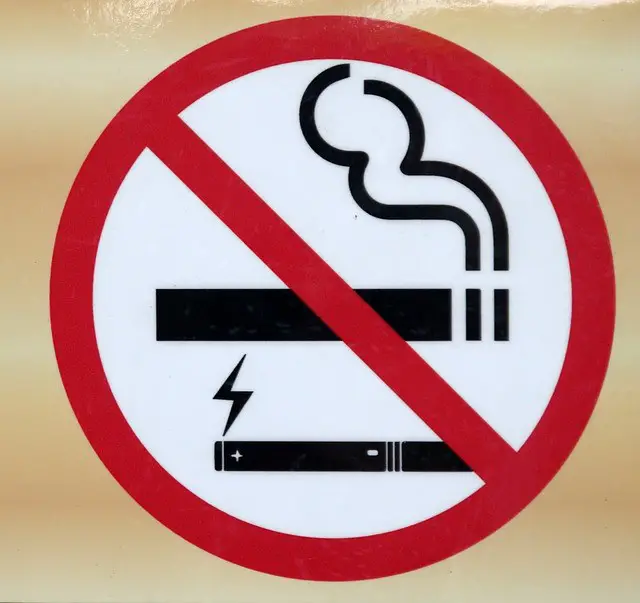
Research has shown that moderate drinking may increase HDL cholesterol, which lowers the amounts of LDL cholesterol, that form plaques in your arteries increasing the risk of atherosclerosis.
Excessive drinking, and binge drinking more than 8 glasses per day increase triglycerides and plasma total cholesterol. Alcohol intake increases weight and waist circumference leading to obesity.
Despite the findings that moderate drinking can lower cholesterol, you should completely avoid consuming alcohol because of the health effects it has on your liver and overall health.
Smoking increases levels of bad cholesterol and reduces good cholesterol. It is also a cardiovascular risk factor.
Diet
Is tuna high in cholesterol? It is rich in the good type of cholesterol. When you increase your intake of MUFA, PUFA, and MCT-rich foods, moderate your intake of saturated fat, and reduce your consumption of trans fats, you can effectively lower cholesterol. Here are dietary changes you can make and cholesterol-fighting foods with cholesterol-lowering properties.
Go Keto
A keto diet can be a helpful tool for weight loss. It advocates for the consumption of good fats with cholesterol-lowering properties. You will avoid processed and junk foods rich in trans fats that may increase the risks of heart attack and stroke. Reduce consumption of red meat and processed meats to lower consumption of saturated fats.
Fats and oils that are rich in MUFAs, PUFAs, and MCTs like olive oil and coconut oil are good options recommended on keto that can help reduce plasma lipid concentration in the body.
On a keto diet, you are eating more fat, less carbs and moderate protein which leads to ketosis. Fat cells are composed of triglycerides and cholesterol, so when fats are broken down, cholesterol is released. As long as you are restricting carbs, the type of cholesterol being released will be the large buoyant LDL, that is less harmful to the heart.
Losing weight helps control lipid profile, so eat keto to assist with weight maintenance.
Go Nuts
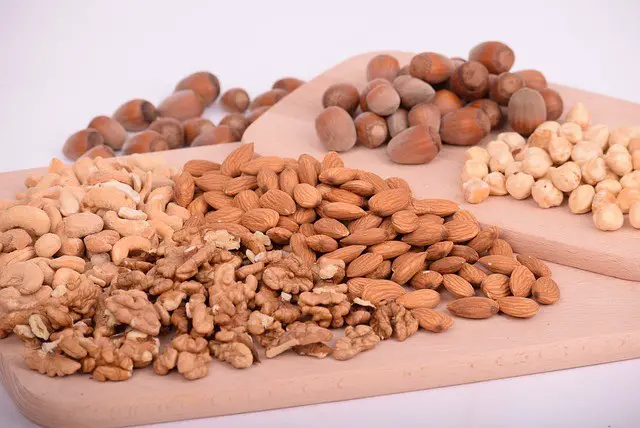
Nuts are rich in fiber, minerals, vitamins, and monounsaturated fats that are good for the heart. They also contain plant sterols, naturally occurring compounds that reduce the absorption of fats into the bloodstream. Eat your almonds, walnuts, and cashews, but in moderation, because they are high-calorie foods. I said to go nuts, but don’t go crazy.
Eat Eggs
If you have familial hypercholesterolemia, which is genetically acquired, then eggs will not be of much help to you for lowering cholesterol levels. But to the rest of us, eggs can work wonders for our cholesterol. One egg contains 186 mg of cholesterol. High? I know. But bear with me. First, I have to mention that there are no studies that have linked egg consumption to increased risk of cardiovascular disease.
The egg yolk is rich in choline and lecithin which are cholesterol mobilizing nutrients, that help you move cholesterol out of the body. Compared to how much cholesterol your body makes per day (almost 3,000 mg), the cholesterol in eggs is little.
Egg yolks also contain phytonutrients like lutein and zeaxanthin which improve lipid profile on a low carb diet. Consumption of eggs on a carb restricted diet lowers oxidative cholesterol and increases levels of large buoyant LDL, which do not affect your arteries. The body absorbs lutein and zeaxanthin in eggs than in plants.
In addition to this, egg yolks are good sources of vitamin K2, which prevents calcium from depositing on arterial walls. Vitamin K2 mobilizes calcium to the bones instead of the arteries, promoting heart health. So before you judge an egg by its cholesterol, the gifts nature in gave you in the egg itself to regulate its cholesterol and that produced in the body.
Dark Chocolate
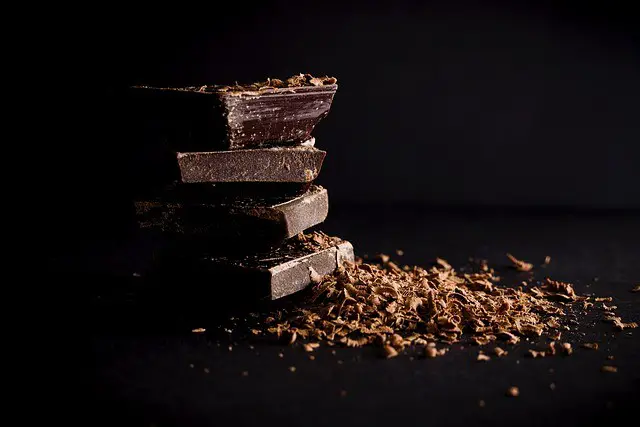
Dark chocolate can be a good tool for improving the lipid profile. Dark chocolate has a high percentage of cocoa with many health benefits. Cocoa contains flavanols that promote energy and fat metabolism, further lowering plasma lipid concentration. Eating dark chocolate over milk chocolate can have beneficial effects on HDL cholesterol and LDL cholesterol-lowering benefits.
Increase Fiber Intake
Your bad cholesterol can decrease by 18% when you eat 30 mg of soluble fiber in a day. Soluble fiber slows down digestion and traps fats by binding to it, lowering cholesterol levels. It also forms a layer in your small intestine reducing the absorption of cholesterol into the blood.
Insoluble fiber may not affect cholesterol like soluble fiber, but you should also consume it because it promotes colon health. Whole grains are good sources of fiber. However, they are high in carbs which could increase weight gain and decrease insulin sensitivity in the body.
Choose non-starchy vegetables to help you lower LDL cholesterol in your body. These are low in carbs and rich in soluble fiber. Soluble fiber lowers lipid concentration and carb restriction will help control glucose and lipid metabolism.
Increase Consumption of Omega 3
We have already discussed the roles of omega 3 in the body. It can lower cholesterol and triglycerides. Two servings of fatty fish per week of salmon, sardines, and trout will help you get the essential fats your body needs. When eating canned fish, choose varieties with lower levels of heavy metals like mercury, as is the case for light canned tuna.
If you do not fancy fish, you can consume plant-based sources of omega 3 like flaxseeds and Chia seeds, together with oral omega 3 supplementation.
Butter Makes Cholesterol Better
I’m not talking of the ordinary butter from grain-fed cow milk! This is quality butter from grass-fed, grass-finished cows. Cultured butter is also an even better option for lowering cholesterol because it is enriched with microbiomes.
Microbiomes in cultured butter release bile salts that are cholesterol mobilizing components. Bile salts manufactured in the liver breaks down lipids into smaller particles. So the additional bile salts produced by the microbiota increased fat metabolism. Fermented foods help control cholesterol in the body.
Moreover, butter form grass-fed milk like eggs, contains vitamin K2 which is good for a healthy heart. If you’re going through menopause, butter may just be the magic ingredient to produce hormones. It contains cholesterol that can be used to make progesterone and estrogen sex hormones. It can also be useful in the production of cortisol, the hormone controlling stress and mood.
Butter from grass-fed cows contains a high amount of beta carotene. Why is this necessary? Beta carotene can help regulate cholesterol levels in the body. Its mechanism of action in lowering cholesterol is attributed to its provitamin function. Low plasma retinol has been associated with increased risk of coronary disease, which proves that beta carotene/ vitamin A has an effect on risk factors of heart disease.
Butter is also rich in conjugated linoleic acid (CLA), which is linoleic acid combined with a protein. CLA decreases inflammation and cholesterol and prevents weight gain. It also contains butyric acid, which fuels colon cells, reducing inflammation in the colon. This small chain fatty acid can lower cholesterol by preventing absorption of cholesterol in the intestine.
Ghee, clarified butter, can also help with lowering cholesterol. Ghee contains linoleic acid that has been proven to lower plasma cholesterol and atherogenesis. Consumption of ghee increases levels of serum oleic acid that increases resistance of LDL to oxidation, preventing deposition of plaque in the arteries.
In Conclusion
Cholesterol is important in the body for the production of hormones and for making vitamin D. Different types of fish contain different amounts of cholesterol. Tuna fish is rich in cholesterol, but the good kind is that it lowers plasma total and LDL cholesterol, reducing risks of heart disease. Speak to a registered dietitian before making any changes to your diet for guidance.
What other tips do you have for lowering cholesterol? Are you a fan of tuna fish and jokes? What did the tuna say when he posted bail? I’m off the hook! Your turn, drop your tuna-related joke down in the comment section below.



